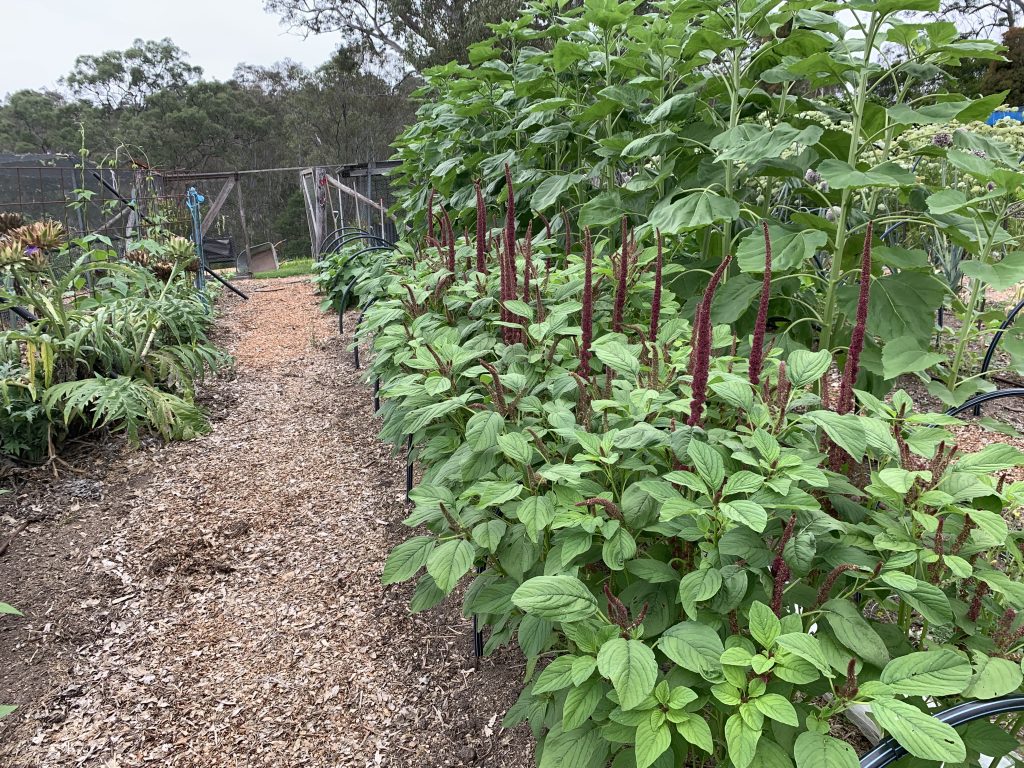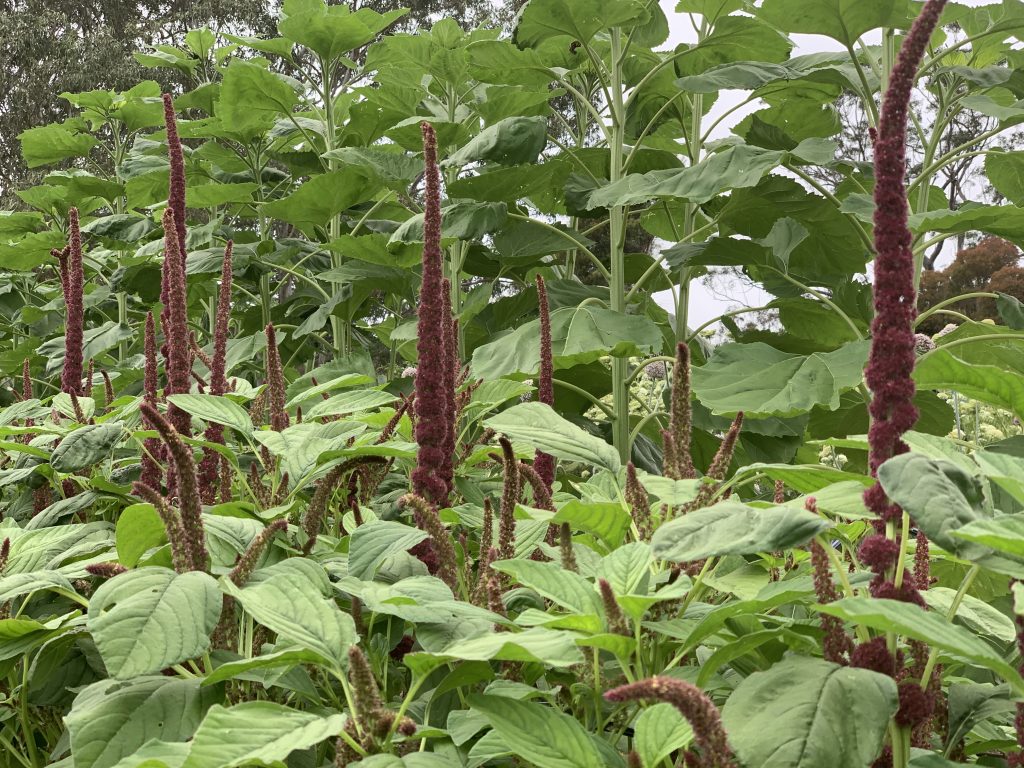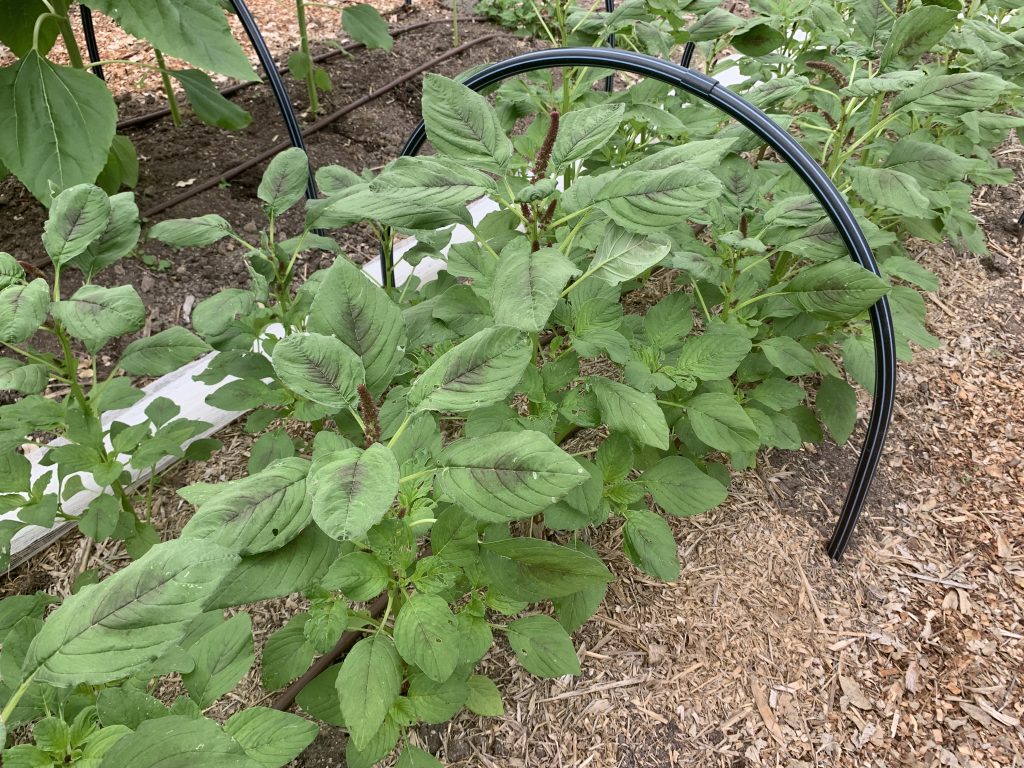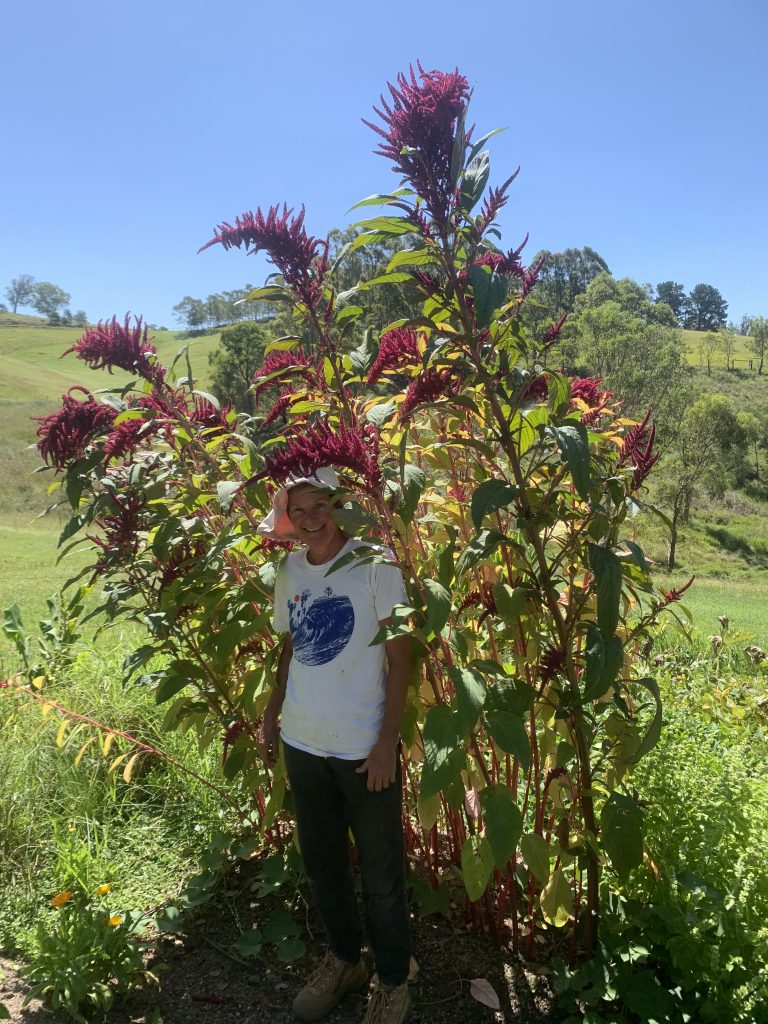Botanical name : Amaranthus spp
Common name : Amaranth, Love Lies Bleeding, Callaloo
Intermediate difficulty for seed saving
Lifecycle: Annual
Pollination: Wind pollination
Mating system: monoecious and self-fertile
Suggested spacing: Same as for grain production
Seed specific requirements: none
Isolation distance: 250 metres
Population size: 10 to 20 plants
Seed maturity: Seed tends to drop when mature so gently shaking seed heads to see if seed falls can be a good indicator to harvest the entire head.
Processing method: Dry threshing, sieving and winnowing
Expected seed viability: 5 years
Images




Growing for seed
There are a number of different Amaranthus species but hybridisation between most of them is possible. All the varieties which flowers in a large terminal panicle should be kept 250m from other varieties with similar flower structures. Amaranthus tricolour, which flowers in the leaf axils along the stem, not just at the end, is the exception and will not cross with varieties with terminal flower panicles.
Selection
The plant form, leaf colour and flower form and colour vary across the different varieties. Those crops being grown for seed should have any plants that do not show the correct traits removed from the garden as soon as possible.
Harvest
Amaranths flower continuously over the season, so it is difficult to determine the best time to harvest. Many varieties will also drop mature seed in the garden as soon as it is ready. Seed can be collected over time by shaking the flower head over a container while in the garden or once it is seen that seed is falling the entire stalk can be cut and laid on a tarp to dry.
As with most plants that produce seed over time, the best and biggest seed will be the earliest to mature.
Processing
After harvesting it will take several weeks for the stalks to dry. Seed is easily dislodged from the flower head by running a gloved hand up the dried stalk. Seed can also be dislodged by banging the stalks on the sides of a bin and letting the seeds fall and be captured in the bin.
Winnowing may be required to separate the dried petals and other materials from the seeds. Care needs to be taken as the seeds are also very small and light.
Uses
Varieties with pale seeds (beige or yellow) are usually grain varieties. The black seeded varieties are usually used as a leaf vegetable.
Contributors
Liz Worth, Nellie Pryke
